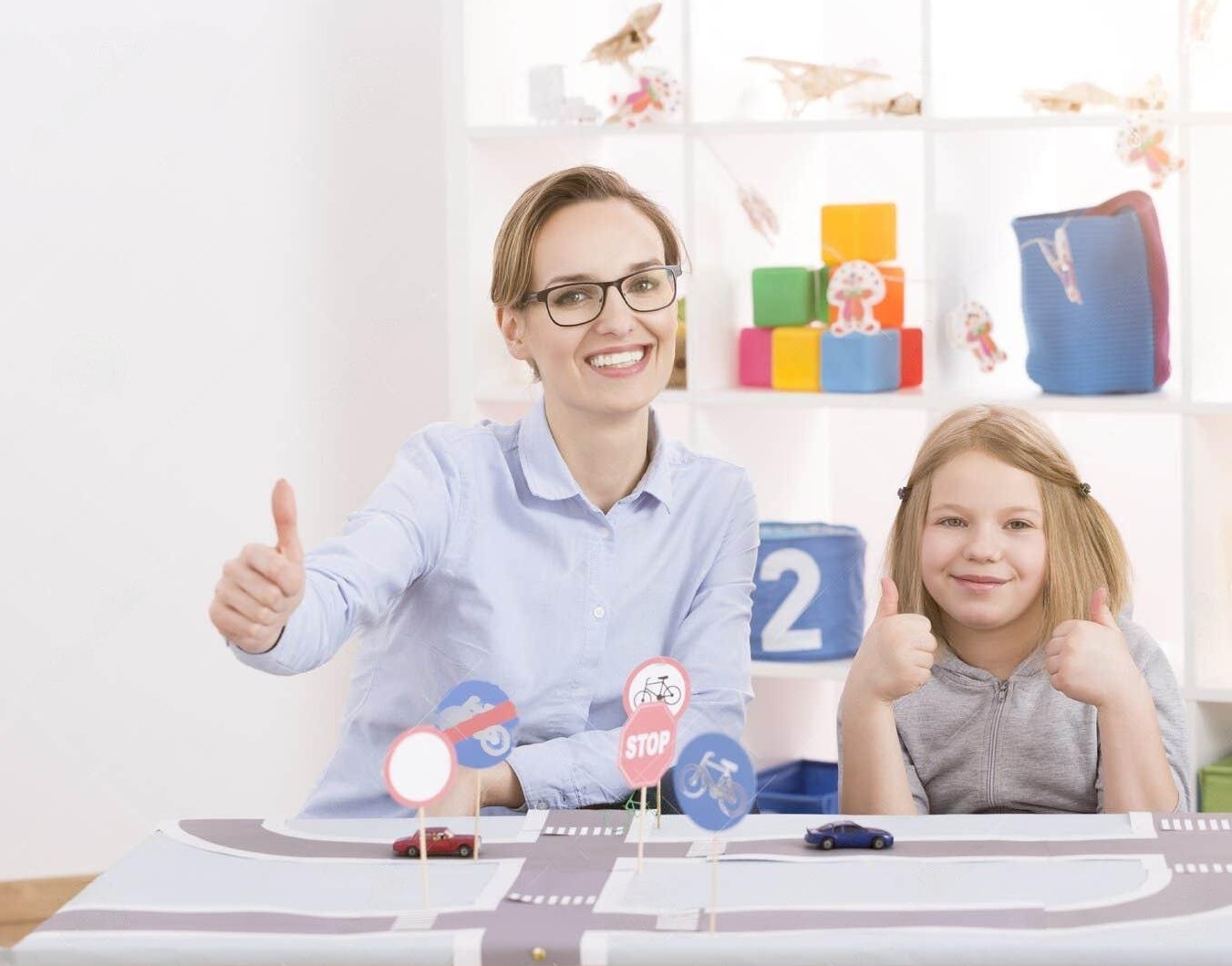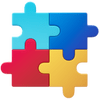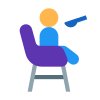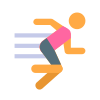Pediatric Conditions
Pediatric Conditions in Occupational Therapy
- Cerebral palsy
- Sensory processing disorder
- Developmental delays
- ADHD - Attention-Deficit - Hyperactivity Disorder
- Down syndrome
- Spina bifida
- Learning disabilities
- Feeding difficulties
- Brachial plexus
- Traumatic brain injury
- Burns
- Cancer
- Fine motor delays
- Difficulty balancing
- Hand injuries
- Muscular dystrophy
- Spinal injury
- Traumatic injuries
- ADD
- Cognitive disorders
- Congenital hand deformities
- Decreased eye hand coordination
Autistic Spectrum Disorders
- Autism spectrum disorder (ASD) is a developmental disability caused by differences in the brain.
- People with ASD often have problems with social communication and interaction, and restricted or repetitive behaviors or interests.
- People with ASD may also have different ways of learning, moving, or paying attention.
- It is important to note that some people without ASD might also have some of these symptoms. But for people with ASD, these characteristics can make life very challenging.
Signs and Symptoms :
- Avoids or does not keep eye contact
- Does not show facial expressions such as happy, sad, angry, and surprised by 9 months of age
- Does not play simple interactive games like pat-a-cake by 12 months of age
- Uses few or no gestures by 12 months of age (for example, does not wave goodbye)
- Does not share interests with others by 15 months of age (for example, shows you an object that they like)
- Does not point to show you something interesting by 18 months of age
- Does not notice when others are hurt or upset by 24 months (2 years) of age
- Does not notice other children and join them in play by 36 months (3 years) of age
- Does not pretend to be something else, like a teacher or superhero, during play by 48 months (4 years) of age
- Does not sing, dance, or act for you by 60 months (5 years) of age
Treatment and Intervention for Autism Spectrum Disorder :
- Behavioral
- Developmental
- Educational
- Social-relational
- Pharmacological
- Psychological
- Complementary and alternative
Behavioral approaches :
- DTT uses step-by-step instructions to teach a desired behavior or response. Lessons are broken down into their simplest parts, and desired answers and behaviors are rewarded. Undesired answers and behaviors are ignored.
- PRT takes place in a natural setting rather than clinic setting. The goal of PRT is to improve a few “pivotal skills” that will help the person learn many other skills. One example of a pivotal skill is being able to initiate communication with others.
Developmental approaches :
Developmental approaches focus on improving specific developmental skills, such as language skills or physical skills, or a broader range of interconnected developmental abilities. Developmental approaches are often combined with behavioral approaches.
The most common developmental therapy for people with ASD is speech and language therapy. Speech and language therapy helps to improve the person’s understanding and use of speech and language. Some people with ASD communicate verbally. Others may communicate through the use of signs, gestures, pictures, or an electronic communication device.
Occupational therapy teaches skills that help the person live as independently as possible. Skills may include dressing, eating, bathing, and relating to people. Occupational therapy can also include:
Sensory integration therapy
Sensory integration therapy to help improve responses to sensory input that may be restrictive or overwhelming.
Physical therapy
Physical therapy can help improve physical skills, such as fine movements of the fingers or larger movements of the trunk and body.
Educational approaches :
- Educational treatments are given in a classroom setting. One type of educational approach is the Treatment and Education of Autistic and Related Communication-Handicapped Children (TEACCH) approach.
- TEACCH is based on the idea that people with autism thrive on consistency and visual learning. It provides teachers with ways to adjust the classroom structure and improve academic and other outcomes.
- For example, daily routines can be written or drawn and placed in clear sight. Boundaries can be set around learning stations. Verbal instructions can be complemented with visual instructions or physical demonstrations.
Social-relational approaches :
- The Developmental, Individual Differences, Relationship-Based model (also called DIR or “Floor Time”) encourages parents and therapists to follow the interests of the individual to expand opportunities for communication.
- The Relationship Development Intervention (RDI) model involves activities that increase motivation, interest, and abilities to participate in shared social interactions.
- Social Stories provide simple descriptions of what to expect in a social situation.
- Social skills groups provide opportunities for people with ASD to practice social skills in a structured environment.
Pharmacological approaches :
- Some medications treat co-occurring symptoms (those that happen along with ASD) and can help people with ASD function better.
- For example, medication might help manage high energy levels, inability to focus, or self-harming behavior, such as head banging or hand biting. Medication can also help manage co-occurring psychological conditions, such as anxiety or depression, in addition to medical conditions such as seizures, sleep problems, or stomach or other gastrointestinal problems.
- It is important to work with a doctor who has experience in treating people with ASD when considering the use of medication. This applies to both prescription medication and over-the-counter medication. Individuals, families, and doctors must work together to monitor progress and reactions to be sure any negative side effects of the medication do not outweigh the benefits.
Psychological approaches :
- Psychological approaches can help people with ASD cope with anxiety, depression, and other mental health issues. Cognitive-behavior therapy (CBT) is one psychological approach that focuses on learning the connections between thoughts, feelings, and behaviors.
- During CBT, a therapist and the individual work together to identify goals and then change how the person thinks about a situation to change how they react to the situation.
Complementary and alternative treatments :
- Some people with ASD and their families use treatments that do not fit into any of the other categories. These treatments are known as complementary and alternative treatments.
- Complementary and alternative treatments are often used to supplement more traditional approaches. They might include special diets, herbal supplements, chiropractic care, animal therapy, arts therapy, mindfulness, or relaxation therapies.
- Individuals and families should always talk to their doctor before starting a complementary and alternative treatment.
Developmental, Individual Differences, Relationship-Based Approach (DIR) :
- This kind of treatment is better known as Floortime. That’s because it involves you getting on the floor with your child to play and do the activities they like.
- It’s meant to support emotional and intellectual growth by helping them learn skills around communication and emotions.
Treatment and Education of Autistic and Related Communication-handicapped Children (TEACCH) :
- This treatment uses visual cues such as picture cards to help your child learn everyday skills like getting dressed. Information is broken down into small steps so they can learn it more easily.
The Picture Exchange Communication System (PECS) :
- This is another visual-based treatment, but it uses symbols instead of picture cards. Your child learns to ask questions and communicate through special symbols. Occupational Therapy. This kind of treatment helps your child learn life skills like feeding and dressing themselves, bathing, and understanding how to relate to other people. The skills they learn are meant to help them live as independently as they can.
Sensory Integration Therapy :
- If your child is easily upset by things like bright lights, certain sounds, or the feeling of being touched, this therapy can help them learn to deal with that kind of sensory information.
Medications :
- There is no cure for autism spectrum disorder, and there’s currently no medication to treat it. But some medicines can help with related symptoms like depression, seizures, insomnia, and trouble focusing.
- Studies have shown that medication is most effective when it’s combined with behavioral therapies.
- Risperidone (Risperdal) and Aripiprazole (Abilify) are the only drugs approved by the FDA for children with autism spectrum disorder. Risperidone can be prescribed for children between 5 and 16 years old to help with irritability and aggression. Aripiprazole can be prescribed for children between 6 and 17 years old.
ADHD – Attention-Deficit / Hyperactivity Disorder
- ADHD is one of the most common neurodevelopmental disorders of childhood. Neurodevelopmental means having to do with the way the brain grows and develops.
- ADHD is usually first diagnosed in childhood and often lasts into adulthood. Children with ADHD may have trouble paying attention, controlling impulsive behaviours (may act without thinking about what the result will be), or be overly active.
ADHD Types :
- Predominantly inattentive presentation
- Predominantly hyperactive-impulsive presentation
- Combined presentation (a combination of inattentive and hyper-impulsive symptoms)
Signs and symptoms :
Signs :
- Daydream a Lot
- Forget or Lose Things a Lot
- Squirm or Fidget
- Talk Too Much
- Make Careless Mistakes or Take Unnecessary Risks
- Have a Hard Time Resisting Temptation
- Have Trouble Taking Turns
- Have Difficulty Getting Along With Others
Symptoms :
- Predominantly Inattentive Presentation
- Predominantly Hyperactive-Impulsive Presentation
- Combined Presentation (a combination of inattentive and hyper-impulsive symptoms)
Treatment types :
Behavioral therapy
Parent training in behavior management
Therapists teach parents ways to manage their child’s behavior, including setting clear routines, positive reinforcement, and how to handle unwanted behavior. This is the only type of treatment recommended for young children since they aren’t yet able to control their behavior without their parent’s help.
Play/talk therapy
This kind of therapy is more useful for older children and teens. This provides them with a space to express their emotions and talk about their problems.
Medication
Stimulants
These are the most common medications for ADHD. Examples include dextroamphetamine and methylphenidate. They help improve focus and attention and reduce impulsiveness.
Non-stimulants
These may be used when stimulants don’t work well or cause side effects. Examples include atomoxetine, clonidine, and guanfacine. They take longer to work, but some of them can last up to 24 hours.
Treatment recommendations :
- For children with ADHD younger than 6 years of age, the American Academy of Pediatrics (AAP) recommends parent training in behavior management as the first line of treatment, before medication is tried.
- Cognitive behavioral therapy (CBT): This helps you reframe your negative thought patterns, manage your emotions, and develop coping skills for your ADHD symptoms.
- ADHD coaching: A coach provides practical support for day-to-day living such as organization, time management, and completing tasks.
- Medication
- Stimulants Your doctor may prescribe amphetamine or methylphenidate.
- Non-stimulant Options include atomoxetine, clonidine, and guanfacine.
- Lifestyle changes
- Regular exercise: Physical activity helps improve focus, lower impulsiveness, and boost your mood.
- Sleep: Getting enough sleep is important to manage ADHD symptoms, as they can get worse when you are sleep deprived.
- Stress management: Stress can make ADHD symptoms worse.
Cerebral Palsy
- Cerebral palsy is a group of movement disorders that can cause problems with posture, manner of walking (gait), muscle tone, and coordination. Depending on the severity and type of CP, it affects different parts of the body.
Types of Cerebral Palsy :
Ataxic cerebral palsy
This type is caused by damage to the cerebellum, resulting in motor control and movement issues.
Athetoid / dyskinetic cerebral palsy
Caused by damage to the basal ganglia and/or cerebellum, this condition results in fluctuating muscle tone and involuntary movements.
Hypotonic CP
This rare type, also connected to cerebellum damage, is characterized by floppy muscles, excess flexibility, and poor mobility.
Spastic CP
The most common type of cerebral palsy, this is caused by damage to the motor cortex and characterized by tight muscles and jerking movements.
Mixed CP
Multiple areas of brain damage can lead to patients having more than one type of CP.
Physical Symptoms :
- Contractures (shortening of muscles)
- Difficulties swallowing or sucking
- Drooling
- Exaggerated or jerky reflexes
- Floppy muscle tone
- Gastrointestinal problems (involving food digestion)
- Incontinence (loss of bladder control)
- Involuntary movements or tremors
- Lack of coordination and balance
- Problems with movement on one side of the body
- Stiff muscles (spasticity) Check with your child’s Pediatrician if they are experiencing any of these symptoms
Neurological Symptoms :
- Build-up of pressure in the brain due to fluid imbalance (hydrocephalus)
- Behavioural problems
- Delayed motor skill development
- Difficulty with speech and language (dysarthria)
- Sensory impairments
- Visual and hearing impairments
Four main types of cerebral palsy treatment are :
Physical therapy
Physical therapy relieves pain, reduces muscle stiffness, and enhances balance, coordination, and overall mobility. Physical therapists use specialized equipment to help your child move freely and live independently.
Occupational therapy
Occupational therapy enables children with CP to master daily tasks and activities by developing fine motor skills and cognitive abilities.
Speech therapy
Speech therapy improves communication and language skills, fostering confidence in learning and socializing. It also assists children with eating and swallowing difficulties.
Alternative therapy
Alternative therapy encourages children to focus on personal growth and navigate physical and mental challenges. It includes methods like hippotherapy (horse riding), music therapy, aquatic therapy, and acupuncture.
Assistive devices
Assistive devices Specialized assistive devices can help individuals with CP who experience issues with communication, hearing, and vision.
Types of assistive devices for cerebral palsy include :
- Cochlear implants to improve hearing
- Computers and software for communication enhancement
- Eye-tracking devices
- Hearing aids and telephone amplifiers for clearer hearing
- Picture books for visual communication aids
- Vision aids like glasses, magnifiers, and large-print materials
- Voice synthesizers for speech support
- Writing and typing aids
Types of cerebral palsy mobility aids include :
- Canes and crutches
- Lifts for shoes
- Motorized wheelchairs
- Orthotic devices for muscle balance and mobility
- Power scooters
- Rolling walkers for mobility support
- Cerebral palsy is a group of conditions that affect movement and posture. It’s caused by damage that occurs to the developing brain, most often before birth. Symptoms appear during infancy or preschool years and vary from very mild to serious.
- Children with cerebral palsy may have exaggerated reflexes.
Sensory Processing Disorder
- Sensory processing disorder is a neurological condition in children that can affect the way the brain processes information from the senses. People with sensory processing disorder may be extra sensitive to or not react to sensory input, depending on how they are affected.
Examples of sensory input may include :
- Light
- Sound
- Taste
- Touch
- Smell
Proprioception
Proprioception is the “internal” sense of awareness you have for your body. It’s what helps you maintain posture and motor control, for example. It also tells you about how you’re moving and occupying space.
Vestibular
This term refers to the inner ear spatial recognition. It’s what keeps you balanced and coordinated.
Interoception
This is the sense of what’s happening in your body. It may be best understood as how you “feel.” This includes whether you feel hot or cold and whether you feel your emotions.
Five senses
Lastly, there are the 5 common senses — touch, hearing, taste, smell, and sigh.
Signs and symptoms of sensory processing disorder :
- Children who are easily stimulated may have hypersensitivity. This means they have an increased sensitivity to sensory inputs like light, sound, and touch. These sensations may bother them more, cause them to lose focus in the presence of too much sensory information, or cause them to act out.
- Children may also experience hyposensitivity. This means they may have reduced sensitivity to sensory output.
Sensory hypersensitivity may cause :
- A Low Pain Threshold
- Appearing Clumsy
- Fleeing Without Regard to Safety
- Covering Eyes or Ears Frequently
- Picky Food Preferences or Gagging When Eating Foods of Certain Textures
- Resisting Hugs or Sudden Touches
- Feeling That Soft Touches Are Too Hard
- Difficulty Controlling Their Emotions
- Difficulty Focusing Attention
- Difficulty Adapting Responses
- Behaviour Problems
Sensory hyposensitivity may cause :
- A High Pain Threshold
- Bumping Into Walls
- Touching Things
- Putting Things Into Their Mouth
- Giving Bear Hugs
- Crashing Into Other People or Things
- Not Regarding Personal Space
- Rocking and Swaying
Autism spectrum disorder (ASD)
Autistic people may have changes to the neural pathways in their brain responsible for processing sensory information.
Attention deficit hyperactivity disorder (ADHD)
ADHD affects the ability to filter out unnecessary sensory information, which can lead to sensory overload.
Schizophrenia
In people with schizophrenia, abnormal mechanisms in the brain’s sensory pathway and in the way it creates and organizes connections between neurons can cause altered sensory and motor processing.
Sleep Disorders
Sleep disorders, such as sleep deprivation, may result in delirium, which can cause temporary sensory processing issues.
Developmental delay
Developmental delays are also not uncommon in people with sensory issues.
Brain injury
Traumatic brain injury (TBI) may be another potential cause of sensory processing disorder, according to 2019 research Trusted Source.
Sensory issues diagnosed :
- Sensory processing disorder isn‘t an officially recognized neurological condition. This means there is no formal criteria for a diagnosis.
- Instead, doctors, educators, or healthcare professionals who help children with issues processing sensory information work from what they see in the child’s behaviors and interactions to determine how to best support them. Generally, these sensory issues are highly visible.
Developmental Delays
- A developmental delay refers to a child who has not gained the developmental skills expected of him or her, compared to others of the same age.
- Delays may occur in the areas of motor function, speech and language, cognitive, play, and social skills.
- Global developmental delay means a young child has significant delays in two or more of these areas of development.
Causes of Developmental Delay :
- Genetic or hereditary conditions like Down syndrome
- Metabolic disorders like phenylketonuria (PKU)
- Trauma to the brain, such as shaken baby syndrome
- Severe psychosocial trauma, such as post-traumatic stress disorder
- Exposure to certain toxic substances like prenatal alcohol exposure or lead poisoning
- Some very serious infections
- Deprivation of food or environment
Symptoms of Developmental Delay :
- Learning and developing more slowly than other children same age
- Rolling over, sitting up, crawling, or walking much later than developmentally appropriate
- Difficulty communicating or socializing with others
- Lower than average scores on IQ tests
- Difficulties talking or talking late
- Having problems remembering things
- Inability to connect actions with consequences
- Difficulty with problem-solving or logical thinking
- Trouble learning in school
- Inability to do everyday tasks like getting dressed or using the restroom without help
Therapies for Developmental Delays :
Physical Therapy
Physical therapy is often helpful for children with delays in gross motor skills.
Occupational Therapy
This can addresses fine motor skills, sensory processing and self-help issues.
Speech and Language Therapy
Speech therapy is typically used to address problems in the areas of understanding and producing language and speech sounds.
Early Childhood Special Education
Early childhood special education provides stimulation for early developmental skills, including play skills.
Behavioural therapy
This may be needed in some children for behavioural difficulties that affect socially appropriate behaviours.
Down Syndrome
- Down syndrome is a genetic condition that causes mild to significant physical and developmental problems.
- People with Down syndrome (DS) are born with an extra chromosome. Chromosomes are bundles of genes, and your body relies on having just the right number of them. With Down syndrome, this extra chromosome leads to a range of issues that affect you both mentally and physically.
Types of Down Syndrome :
Trisomy 21
This is the most common type of Down syndrome, with 95% of people with DS having trisomy 21. Here, all your body’s cells have three copies of chromosome 21 instead of two.
Translocation Down syndrome
About 3% of people with Down syndrome have this type, where there’s an extra part or whole chromosome 21, but it’s attached to another chromosome instead of being a separate chromosome 21.
Mosaic Down syndrome
This type of Down syndrome, which affects about 2% of people with the condition, happens when only some cells in your body have an extra chromosome 21.
Symptoms :
Mental abilities vary, but most people with Down syndrome have mild to moderate issues with thinking, reasoning, and understanding. They’ll learn and pick up new skills their whole lives, but they may take longer to reach important goals like walking, talking, and developing social skills.
People with Down syndrome may also have trouble with behavior – they may not pay attention well, or can be obsessive about some things. That’s because it’s harder for them to control their impulses, relate to others, and manage their feelings when they get frustrated.
Features :
- Eyes that slant up at the outer corner
- Small ears
- A flat nose
- Tongue that sticks out
- Tiny white spots in the colored part of the eyes
- Short neck and overall height
- Small hands and feet
- Short stature
- Loose joints
- Weak muscle tone and joints
- Small pinky fingers that curve
- One crease across the palm of the hand
Down Syndrome Diagnosis :
After a baby is born, a doctor may suspect Down syndrome in a newborn based on the baby’s appearance. But some babies without DS may have similar physical features to a baby with Down syndrome.
A diagnosis can be confirmed by a blood test called a karyotype test that lines up the chromosomes and will show if there’s an extra chromosome 21.
Treatments for Down Syndrome :
There’s no specific treatment for Down syndrome. But there is a wide range of physical and developmental therapies designed to help people with Down syndrome reach their full potential.
The earlier you start treatment, the better. Children with Down syndrome can usually hit the same milestones as other children but at later stages.
Physical, occupational, and speech therapy
Physical and speech therapists can help your child with sitting and walking properly, developing speech, and learning to communicate. Occupational therapists teach everyday skills like how to get dressed, eat, or use a computer.
Behavioural counseling
Children with Down syndrome may also have conditions like ADHD, autism, or compulsive behaviours that need to be addressed.
Specialized education services
By law in the U.S., children with Down syndrome can get free educational services and devices to help with learning. This assistance lasts until age 21 or when they finish high school, whichever comes first.
- Social and recreation activities
- Programs that offer job training and teach self-care skills
Spina Bifida
- Spina bifida is a birth defect in which an area of the spinal column doesn’t form properly, leaving a section of the spinal cord and spinal nerves exposed through an opening in the back.
- The most common and serious form of spina bifida is called myelomeningocele (my•e•lo•me•nin•go•cele) (MMC), in which part of the spinal cord and surrounding nerves push through the open bones (vertebrae) in the spine and protrude from the fetus’ back.
Spina Bifida Symptoms :
- Bladder and bowel problems (incontinence)
- Sexual Dysfunction
- Weakness and loss of sensation below the defect
- Inability to move the lower legs (paralysis) and other cognitive impairments
- Orthopaedic malformations such as club feet or problems of the knees or hips
Generally, the higher the defect is located on the spine, the more severe the complications.
In many cases, the brain develops an Arnold-Chiari II malformation, in which the hindbrain herniates or descends into the upper portion of the spinal canal in the neck. This herniation of the hindbrain blocks the circulation of cerebrospinal fluid, causing hydrocephalus (accumulation of fluid in the brain), which can injure the developing brain. Ventricular shunting (placement of a thin tube into the ventricles of the brain) is used to drain fluid and relieve hydrocephalus.
Evaluation and diagnosis of spina bifida :
- High-resolution level II ultrasound – to confirm the diagnosis and determine the location of the lesion, and to assess for any other birth defects such as club feet
- Ultrafast fetal MRI – to confirm presence of the Chiari II malformation and to screen for evidence of any other neurologic abnormalities
- Fetal echocardiogram – to determine any problems with the heart
- Amniocentesis – to confirm the presence of elevated amniotic fluid alpha-fetoprotein (AFAFP) levels and acetylcholinesterase (AChE), which indicate open neural tube defects
Spina Bifida Treatment :
The two main spina bifida treatment options are fetal surgery during pregnancy or surgery on the baby right after birth.
Deciding whether prenatal or postnatal spina bifida repair is appropriate is influenced by several considerations, including gestational age, the level of the myelomeningocele lesion on the spine, presence of the Chiari II malformation, and a number of important maternal health factors.
Prenatal repair also requires a significant commitment on the part of the mother and her support person. Read our criteria for fetal surgery to determine when fetal surgery for myelomeningocele is an option.
Our team helps each family fully understand the benefits and risks of spina bifida treatment so they can make the best decision for their unique situation. Our team also counsels and supports families who choose to terminate the pregnancy.
Learning Disabilities
- Learning disabilities are a group of neurodevelopmental disorders .that can significantly hamper a person’s ability to learn new things.
- As a result, the person may have trouble with tasks such as speaking, reading, writing, paying attention, understanding information, remembering things, performing mathematical calculations, or coordinating movements.
Types of Learning Disabilities :
Dyslexia
Dyslexia is the most common learning disability, accounting for 80% of all learning disability cases.
- It is a language processing disorder characterized by difficulty with speaking, reading, writing, or understanding words.
- The person’s vocabulary to develop at a slower pace and lead to issues with grammar, reading comprehension, and other language skills.
Dysgraphia
People with dysgraphia may have difficulty putting their thoughts into writing due to issues with vocabulary, spelling, grammar, memory, and critical thinking.
- This condition is characterized by poor handwriting, as the person may struggle with letter spacing, spatial awareness, and motor planning.
Dyscalculia
Sometimes known as “math dyslexia,” this condition includes learning disorders related to mathematics, such as difficulty with numbers, concepts, and reasoning.
- People with dyscalculia may struggle to count money, read clocks and tell time, perform mental math calculations, identify number patterns, and apply mathematical formulae.
Auditory processing disorder (APD)
People with APD may have difficulty processing sounds because their brain misinterprets auditory information received by the ear.
- As a result, they may confuse the order of sounds in certain words, or they may not be able to distinguish between sounds such as the teacher’s voice and the background noise in the classroom.
Language processing disorder (LPD)
This is a subset of APD, characterized by difficulties with processing spoken language.
- The person may have difficulty attaching meaning to sound groups representing words, sentences, and stories.
Nonverbal learning disabilities (NVLD)
NVLD is characterized by difficulty interpreting nonverbal cues such as facial expressions, body language, tone of voice, and other nonverbal signals.
Visual perceptual/visual motor deficit
People with this condition may have difficulty with hand-eye coordination and motor activities.
- They may frequently lose their spot while reading, demonstrate unusual eye movements while reading or writing, confuse similar-looking letters, have difficulty navigating their environment, and struggle to manage items like pens, pencils, crayons, glue, and scissors.
Symptoms :
- Poor memory
- Difficulty focusing
- Short attention span
- Difficulty with reading or writing
- Inability to distinguish between sounds, letters, or numbers
- Difficulty sounding out words
- Tendency to put numbers or letters in the wrong sequence
- Difficulty telling time
- Confusion between right and left
- Tendency to reverse letters
- Difficulty grasping certain words and concepts
- Disconnect between words and meaning (i.e.. saying one thing but meaning another)
- Difficulty expressing thoughts and emotions
- Poor hand-eye coordination
- Delayed speech development
- Disorganization
- Trouble with listening and following instructions
- Inappropriate responses
- Restlessness and impulsiveness
- Tendency to act out
- Difficulty with discipline
- Resistance to change
- Inconsistent performance on a daily or weekly basis
Diagnosing Learning Disabilities :
Academic testing
The healthcare provider may administer a standardized achievement test that checks the person’s reading, writing, and arithmetic skills, as well as an intelligence quotient (IQ) test. If the person performs well on the IQ test but has a lower score on the achievement test, it could indicate that they have a learning disability.
Performance review
The healthcare provider may review and evaluate the person’s academic, professional, social, and developmental performance.
Medical history
The healthcare provider will likely ask questions about the person’s personal and family medical history.
Physical and neurological exam
The healthcare provider may conduct a physical and neurological exam to check for other health conditions such as brain diseases, mental health conditions, and developmental and intellectual disabilities.
Treatment :
Special education
Children with learning disabilities may benefit from education by specially trained teachers who perform a comprehensive evaluation of the child’s abilities and then help the child build on their strengths while compensating for their disabilities.
Medication
Some people may need to take medication to improve their ability to focus and concentrate.
Therapy
Psychotherapy can help people with learning disabilities deal with emotional issues and develop coping skills.
Other interventions
People with learning disabilities may also benefit from other interventions such as speech and language therapy.
Support groups
People with learning disabilities as well as parents of children with learning disabilities may benefit from support group meetings that help them connect with others who have similar experiences. Learning difficulties can often lead to tension, misunderstandings, and conflicts among the family, particularly among families where the condition is hereditary.
Feeding Difficulties
- They can’t eat or drink anything.
- They can’t eat and drink enough of the right things to stay healthy.
- They choose not to eat or drink enough of the right things to stay healthy.
With a baby, you might have breastfeeding problems. Other baby feeding problems might come from your baby not being able to suck, chew, or swallow. Eating disorders in young children are called feeding disorders. They might also be called toddler eating disorders. (Usually, the term eating disorder is used for pre-teens, teenagers, and adults.)
With treatment, feeding disorders can get better. Eating can turn into a safer, easier, and happier experience for your child and the rest of the family. Treatment can also help your child become healthier.
Symptoms :
- Not gaining weight well
- Coughing, choking, or gagging when eating or drinking
- Throwing up often
- Choking on food or drink once during a meal and not eating again
- Eating and breathing coordination problems
- Not eating baby food purees by 8 months old
- Not eating table foods by 12 months old
- Not using a cup by 16 months old
- Eating baby foods at 16 months old
- Avoiding foods with a certain texture or from a certain food group (such as fruits and vegetables)
- Eating fewer than 20 kinds of food, especially when they stop eating certain foods and don’t replace them with other foods
- Crying or arching the back at most meals
- Taking more than 30 minutes to eat meals on a regular basis
- Arguing with your child about food and feeding
- When feeding your child is difficult for everyone
- Eating problems you have that your child may get from you
- Gastroesophageal reflux. This is a condition where acid from the stomach flows back into the esophagus, the tube that connects your child’s mouth to their stomach.
- Eosinophilic esophagitis or inflammation of the esophagus
- Other stomach or intestine problems
- Seizures
- Nervous system problems
- Premature birth
- Sensory system problems
- Autism
- Craniofacial [CRAY-nee-oh-FAY-she-awl] syndromes or abnormalities of the face or head
- Heart or lung problems
- Face and mouth muscle problems
- Problems swallowing certain liquids and food textures
Diagnosis and Tests :
- The foods your child eats
- Where and when your child eats
- Who feeds your child
Treatments :
- Putting your child in certain safe eating and drinking positions
- Giving your child certain drinks and foods that are safe for them
- Helping your child to eat a wider variety of foods, and drink assorted drinks
- Teaching you and your child safe feeding and drinking skills
- Coordinating services with other medical and therapy professionals
Prevention :
- Not arguing about food
- Making food fun
- Avoiding power struggles over food
- Being patient when giving your baby or child new foods to try
Brachial Plexus
The brachial plexus (BRAY-key-el PLEK-sis) is a network of nerves that provides movement and feeling to the shoulder, arm and hand. The nerves supporting the arm exit the spinal column high in the neck; those that support the hand and fingers exit lower in the neck.
This nerve complex is composed of four cervical nerve roots (C5-C8) and the first thoracic nerve root (T1). These roots combine to form three trunks. C5-C6 form the upper trunk, C7 continues as the middle trunk and C8-T1 form the lower trunk.
Each trunk splits into a division. Half the divisions globally supply flexor muscles (that lift and bend the arm). The others supply the extensor muscles (that straighten the arm and bring it down).
Causes of Brachial Plexus Injury :
- A brachial plexus birth injury is thought to be caused by an injury involving the child’s brachial plexus during the delivery process. This injury may result in incomplete sensory and / or motor function of the involved arm.
- Traumatic brachial plexus injuries may occur due to motor vehicle accidents, bike accidents, ATV accidents, sports, etc. Nerve injuries vary in severity from a mild stretch to the nerve root tearing away from the spinal cord.
Symptoms of Brachial Plexus Injury :
- Patterns of muscle weakness or paralysis of the involved upper extremity depending on which nerves of the brachial plexus are involved
- Decreased sensation (feeling) in the involved upper extremity
- Pain
Types of Brachial Plexus Injuries :
Avulsion
The nerve is torn away from its attachment at the spinal cord; the most severe type. An eyelid droop suggests an avulsion of the lower brachial plexus (Horner’s syndrome).
Rupture
The nerve is torn, but not at the spinal cord attachment.
Neuroma
Scar tissue has grown around the injury site, putting pressure on the injured nerve and preventing the nerve from sending signals to the muscles.
Neurapraxia
The nerve has been stretched and damaged but not torn.
Conditions Related to Brachial Plexus Injuries :
Erb’s Palsy
- C5, C6 and sometimes C7 nerves are involved
- Often presents with arm straight and wrist fully bent (waiter’s tip)
- May have good hand function but not full movement of the arm
- May have instability of the shoulder joint
- Often presents with weak biceps and deltoid muscles (unable to bend elbow or lift arm at the shoulder)
- Includes about 75 percent of all brachial plexus injuries
Global Palsy
- All five nerves of the brachial plexus are involved (C5-T1)
- Presents with no movement at the shoulder, arm or hand
- May have no sensations throughout the arm
Horner Syndrome
- Result of nerve damage affecting the eye including constriction of the pupil (miosis) and eye drooping (ptosis)
- Sometimes seen with nerve root avulsions of the brachial plexus
Treatment for Brachial Plexus Injury :
Nonsurgical management is also an important part of the treatment process.
Occupational and / or physical therapy is often recommended including range of motion, strengthening, neuromuscular electrical simulation, Kinesio Taping, joint mobilization, aquatic therapy and use of or thoses.
Traumatic Brain Injury
- A traumatic brain injury (TBI) is a serious medical issue that affects how your brain works.
- You can get a TBI from a hard bump or jolt to your head or if you’re hit with something that penetrates your skull. Traumatic brain injuries are a major cause of death and disability.
- They can cause short-term and long-term medical issues that can affect every part of your life.
- There are treatments for TBI. More importantly, there are ways to prevent them from happening.
Types of Traumatic Brain Injury :
Hematoma
A hematoma is a blood clot within the brain or on its surface. Hematomas may occur anywhere within the brain. An epidural hematoma is a collection of blood between the dura mater (the protective covering of the brain) and the inside of the skull. A subdural hematoma is a collection of blood between the dura mater and the arachnoid layer, which sits directly on the surface of the brain.
Contusion
A cerebral contusion is bruising of brain tissue. When examined under a microscope, cerebral contusions are comparable to bruises in other parts of the body. They consist of areas of injured or swollen brain mixed with blood that has leaked from arteries, veins, or capillaries. Most commonly, contusions are at the base of the front parts of the brain, but may occur anywhere.
Intracerebral Hemorrhage
An intracerebral hemorrhage (ICH) describes bleeding within the brain tissue, may be related to other brain injuries, especially contusions. The size and location of the hemorrhage helps determine whether it can be removed surgically.
Subarachnoid Hemorrhage
Subarachnoid hemorrhage (SAH) is caused by bleeding into the subarachnoid space. It appears as diffuse blood spread thinly over the surface of the brain and commonly after TBI. Most cases of SAH associated with head trauma are mild. Hydrocephalus may result from severe traumatic SAH.
Diffuse Injuries
TBIs can produce microscopic changes that do not appear on CT scans and are scattered throughout the brain. This category of injuries, called diffuse brain injury, may occur with or without an associated mass lesion.
Diffuse Axonal Injury
Axonal injury refers to impaired function and gradual loss of axons. These long extensions of nerve cells enable them to communicate with each other. If enough axons are harmed in this way, the ability of nerve cells to communicate with each other and to integrate their function may be lost or greatly impaired, possibly leaving a patient with severe disabilities.
Ischemia
Another type of diffuse injury is ischemia or insufficient blood supply to certain parts of the brain. A decrease in blood supply to very low levels may occur commonly in a significant number of TBI patients. This is crucial since a brain that has just undergone a traumatic injury is especially sensitive to slight reductions in blood flow. Changes in blood pressure during the first few days after head injury can also have an adverse effect.
Skull Fractures
Linear skull fractures or simple breaks or “cracks” in the skull may accompany TBIs.
Symptoms :
- Vomiting
- Lethargy
- Headache
- Confusion
- Paralysis
- Coma
- Loss of consciousness
- Dilated pupils
- Vision changes (blurred vision or seeing double, unable to tolerate bright light, loss of eye movement, blindness)
- Cerebrospinal fluid (CSF) (clear or blood-tinged) appear from the ears or nose
- Dizziness and balance concerns
- Breathing problems
- Slow pulse
- Slow breathing ratewith an increase in blood pressure
- Ringing in the ears or changes in hearing
- Cognitive difficulties
- Inappropriate emotional responses
- Speech difficulties (slurred speech, inability to understand and/or articulate words)
- Difficulty swallowing
- Body numbness or tingling
- Droopy eyelid or facial weakness
- Loss of bowel control or bladder control
Treatment :
- In a mild case of TBI, symptoms normally go away without treatment. However, repeated, mild TBIs can be dangerous or fatalTrusted Source. This is why it is essential to rest and avoid further exposure until a doctor gives the go-ahead.
- More severe cases will require hospitalization, possibly with intensive care.
- Emergency care aims to stabilizeTrusted Source the patient’s condition and prevent any worsening of brain damage.
- This will involve ensuring the airway is open, providing ventilation and oxygen, and maintaining blood pressure.
- Medications may be used to help control symptoms.
Sedation
This can help prevent agitation and excess muscle activity and contribute to pain relief. Examples include profanol.
Pain relief
Opioids may be used.
Diuretics
These increase urine output and reduce the amount of fluid in tissue. These are administered intravenously. Mannitol is the most commonly used diuretic for TBI patients.
Anti-seizure medication
A person who has experienced moderate to severe TBI may have seizures for up to a week after the incident. Medication may help prevent further brain damage that may result from a seizure.
Coma-inducing medications
During a coma, a person needs less oxygen. Sometimes, a coma may be deliberately induced coma if the blood vessels are unable to supply adequate amounts of food and oxygen to the brain.
Surgery :
Surgery may be necessary in some cases
Removing a hematoma
Internal bleeding can cause partly or fully clotted blood to pool in some part of the brain, worsening the pressure on the brain tissue. Emergency surgery can remove a hematoma from between the skull and the brain, reducing pressure inside the skull and preventing further brain damage.
Repairing a skull fracture
Any part of the skull that is fractured and pressing into the brain will need to be surgically repaired. Skull fractures that are not pressing into the brain normally heal on their own. The main concern with a skull fracture is that forces strong enough to cause it may have caused further, underlying damage.
Creating an opening in the skull
This can relieve the pressure inside the skull if other interventions have not worked.
Burns
Types of Burns :
- Superficial burns: involve the epidermis (the top layer of skin)
- Partial-thickness burns: involve the epidermis and the dermis (the layer of skin underneath the epidermis that contains blood vessels, nerves, hair follicles and glands)
- Full-thickness burns: involve both layers of skin; may extend into the subcutaneous tissue, muscle or bone underneath
- Any burn that is more than superficial requires medical care. Many burns are potentially life-threatening and require EMS care.
Signs and Symptoms :
- Burns through deep layers of skin, fat, muscle or bone*
- Large body surface area burns
- Burns to the face, mouth, nose, hands, feed, joints or groin*
- Electrical, chemical, radiation or explosive burns*
- Burns in people with medical conditions or other injuries*
- Burns in very young or elderly*
- Burns around limb, chest or neck*
- Red, brown, black or white skin
- Extreme to almost no pain
- Swelling
- Blisters that may ooze
Diagnosis :
If you go to a doctor for burn treatment, he or she will assess the severity of your burn by examining your skin. He or she may recommend that you be transferred to a burn center if your burn covers more than 10 percent of your total body surface area, is very deep, is on the face, feet or groin, or meets other criteria established by the American Burn Association.
Your doctor will check for other injuries and might order lab tests, X-rays or other diagnostic procedures.
Treatment :
Most minor burns can be treated at home. They usually heal within a couple of weeks.
For serious burns, after appropriate first aid and wound assessment, your treatment may involve medications, wound dressings, therapy and surgery. The goals of treatment are to control pain, remove dead tissue, prevent infection, reduce scarring risk and regain function.
People with severe burns may require treatment at specialized burn centers. They may need skin grafts to cover large wounds. And they may need emotional support and months of follow-up care, such as physical therapy.
Physical and occupational therapy :
- If the burned area is large, especially if it covers any joints, you may need physical therapy exercises. These can help stretch the skin so that the joints can remain flexible.
- Other types of exercises can improve muscle strength and coordination. And occupational therapy may help if you have difficulty doing your normal daily activities.
Cancer
Cancer Types :
Leukemias
Types of childhood cancer :
Leukemia (accounts for about 28% of childhood cancer cases)
- Acute lymphoblastic leukemia (ALL)
- Acute myeloid leukemia (AML)
Symptoms :
- Tiredness
- Weakness
- Dizziness or lightheadedness
- Shortness of breath
- Pale skin
- Infections that keep coming back or won’t go away
- Bruises that happen easily
- Nosebleeds
- Bleeding gums
- Joint pain
- Swollen lymph nodes
- Swollen stomach or abdomen
Other potential risks for leukemia include :
Radiation
There’s some evidence that CT scans, X-rays, and other sources of radiation are linked to a very small increased risk for leukemia. But the research here is mixed.
Chemicals
Some studies show that kids exposed to chemotherapy drugs, some manufacturing chemicals, or pesticides may have greater chances of getting leukemia. But more research is needed.
Immune suppression drugs
Kids who are on immune-suppressant treatments may be at a greater risk of leukemia.
Treatments :
Treatments include :
Physical symptoms
- Contractures (shortening of muscles)
- Difficulties swallowing or sucking
- Drooling
- Exaggerated or jerky reflexes
- Floppy muscle tone
- Gastrointestinal problems (involving food digestion)
- Incontinence (loss of bladder control)
- Involuntary movements or tremors
- Lack of coordination and balance
- Problems with movement on one side of the body
- Stiff muscles (spasticity)
Neurological symptoms
- Build-up of pressure in the brain due to fluid imbalance (hydrocephalus)
- Behavioural problems
- Delayed motor skill development
- Difficulty with speech and language (dysarthria)
- Sensory impairments
- Visual and hearing impairments
Fine Motor Delays
Fine motor developmental delays describe a lag in the ability to use the extremities (hands, fingers, wrists, tongue, lips, feet, and toes) as expected for a child’s age.
Fine motor skills involve the ability to hold, use, or manipulate objects using some of the smallest muscles of the body.
These skills require hand-eye coordination as well as nerve and muscle control. Children need fine muscle skills to complete tasks like coloring, picking up toys, using scissors, and even making a pucker face with the lips.
Fine motor skills :
- Holding a pencil, crayon, marker, or paintbrush
- Drawing a picture, writing neatly, filling in a bubble answer to a test question
- Holding spoons and forks to eat
- Playing with blocks or puzzles
- Using scissors and rulers
- Brushing teeth
- Sticking out tongue to taste food
- Buttoning clothes
- Opening containers with lids
Fine Motor Developmental Delays :
- Premature birth that causes muscles to develop more slowly
- Genetic causes (such as Down syndrome)
- Nerve and muscle disorders (such as muscular dystrophy or cerebral palsy)
- Developmental diagnoses such as autism
- Decreased finger, arm, and core strength from a pre-existing gross motor delay
- Pre-existing cognitive delays
- Vision problems
Treatment For Fine Motor Developmental Delays :
- Playing with Play doh
- Using finger paint
- Chores such as setting the table and wiping the table with a sponge
- Placing pegs in a board
- Playing with finger puppets
- Pouring juice into a cup
Difficulty Balancing
Symptoms of balance problems :
What causes balance problems :
- Infections of Your Ear
- Inner Ear Problems
- Head Injury
- Poor Blood Circulation
- Certain Medications
- Chemical Imbalance in Your Brain
- Low Blood Pressure
- High Blood Pressure
- Neurological Conditions
- Arthritis
- Aging
Risk of balance problems :
Balance problems diagnosed :
- Blood Tests
- Hearing Exams
- Eye Movement Tests
- Imaging Scans of Your Brain and Head, Such as an MRI or CT Scan
- Posturography, Which is a Study of Your Posture
Balance problems treated :
- Medication
- Surgery
- Dietary Changes
- Physical Therapy
- Exercises You Can Do at Home
Hand Injuries
- Hand injuries are common and can involve a variety of structures such as the skin, tendons, nerves, blood vessels, bones and joints.
- Many injuries resolve in time but there are certain types that require interventional treatment.
- The most common cause of the injuries was blunt trauma, followed by injury from a sharp object.
- Most hand injuries will heal without significant loss of function if evaluated by a doctor soon after the injury.
Hand Injury Causes :
- Lacerations (Cuts)
- Fractures and Dislocations
- Soft Tissue Injuries and Amputations
- Infections
- Burns
- High-pressure Injuries (Grease and Paint Guns)
Hand Injury Symptoms :
Lacerations
- Tenderness (Pain)
- Bleeding
- Numbness
- Decrease Range of Motion (Difficulty Moving)
- Weakness
- Pallor (Pale or Bloodless)
Fractures and dislocations
- Tenderness
- Deformity
- Swelling and Discoloration
- Decrease Range of Motion
- Numbness
- Weakness
- Bleeding
Soft tissue injuries and amputations
- Tenderness
- Deformity (With or Without Tissue and Bone Loss)
- Swelling and Discoloration
- Bleeding
- Weakness
- Numbness
Infections
- Tenderness
- Local Warmth
- Redness
- Swelling
- Fever (Rare in Hand Infections)
- Deformity
- Decrease Range of Motion
Burns
- Tenderness or Complete Numbness
- Deformity
- Discoloration
- Loss of Tissue
- Change in Texture of the Skin
- Redness
- Blistering
- Black Areas of Tissue
High-pressure injuries
- Pain
- Swelling
- Occasional Skin Discoloration
Hand Injury Diagnosis :
Hand Injury Treatment
Lacerations (cuts)
- Apply pressure to the wound to stop bleeding
- If possible, wash dirt or debris from the wound
- Cover the wound to prevent further contamination or injury
- Do not remove large foreign bodies such as nails, hooks, or knives
- Seek medical attention
Fractures (broken bone) and dislocations
- Immobilize or splint the hand, if possible.
- Cover the injury if bone is exposed (open fracture), with a clean towel, cloth, or gauze.
- Ice may help decrease the pain, but never apply ice for more than 20 minutes at one time, and never apply ice directly to skin.
- Seek medical attention
Soft tissue injuries and amputations
- Apply pressure to stop bleeding
- Cover the injury with a damp bandage, if possible
- Elevate the hand above the heart to reduce bleeding
- Retrieve the amputated body part (if possible). If possible, cover the amputated body part, keep it damp, and place the part (for example, finger or thumb) near ice to cool. Do not place body part in direct contact with ice in order to prevent freezing
- Seek medical attention
Infections
- Keep the injury clean and dry
- Seek medical attention
Burns
- Thermal (heat) burn: Cool with water, not ice, and then cover the injury.
- Chemical burn: Irrigate with lots of water, then cover the injury.
- Frostbite: Rewarm with warm-water bath or soak, then cover the injury.
- Seek medical attention
Muscular Dystrophy
- The genes that cause it
- The muscles it affects
- The age when symptoms first appear
- How quickly the disease gets worse
DMD
DMD) is the most common form. It mainly affects boys, and starts between ages 3 and 5
Becker muscular dystrophy
Becker muscular dystrophy is like Duchenne, except milder. It also affects boys but the symptoms start later — between ages 11 and 25
Myotonic muscular dystrophy
Myotonic muscular dystrophy is the most common form in adults. People who have it can’t relax their muscles after they contract. It can affect both men and women, and it usually starts when people are in their 20s.
Congenital muscular dystrophy
Congenital muscular dystrophy starts at birth or shortly afterwards.
Limb-Girdle muscular dystrophy
Limb-Girdle muscular dystrophy often starts in a person’s teens or 20s.
Facioscapulohumeral muscular dystrophy
Facioscapulohumeral muscular dystrophyaffects the muscles of the face, shoulders, and upper arms. It can affect anyone from teenagers to adults in their 40s.
Distal muscular dystrophy
Distal muscular dystrophy affects the muscles of the arms, legs, hands, and feet. It usually comes on later in life, between ages 40 and 60.
Oculopharyngeal muscular dystrophy
Oculopharyngeal muscular dystrophy starts in a person’s 40s or 50s. It causes weakness in the muscles of the face, neck, and shoulders, and droopy eyelids (ptosis), followed by difficulty swallowing (dysphagia).
Emery-Dreifuss muscular dystrophy
Emery-Dreifuss muscular dystrophy affects mainly boys, usually starting around age 10. People with this form often have heart problems along with muscle weakness.
Causes :
Symptoms :
- Fall Down Often
- Have weak muscles
- Have muscle cramps
- Have trouble getting up, climbing stairs, running, or jumping
- Walk on their toes or waddle
Diagnosis :
- Which muscles seem to be giving them trouble?
- Do they have a hard time walking or doing their usual activities?
- How long has this been happening?
- Does anyone in your family have muscular dystrophy? What kind?
Treatment :
- Trials of new therapies are ongoing.
- People with muscular dystrophy should be monitored throughout their lives.
- Their care team should include a neurologist with expertise in neuromuscular diseases, a physical medicine and rehabilitation specialist, and physical and occupational therapists.
- Some people might also need a lung specialist (pulmonologist), a heart specialist (cardiologist, a sleep specialist, a specialist in the endocrine system (endocrinologist), an orthopedic surgeon and other specialists.
- Treatment options include medications, physical and occupational therapy, and surgical and other procedures.
- Ongoing assessments of walking, swallowing, breathing and hand function enable the treatment team to adjust treatments as the disease progresses
Spinal Injury
- A spinal cord injury is damage to the spinal cord. It’s an extremely serious type of physical trauma that’s likely to have a lasting and significant impact on most aspects of daily life.
- The spinal cord is a bundle of nerves and other tissue that the vertebrae of the spine contains and protects.
- The vertebrae are the bones stacked on top of each other that make up the spine
- The spine contains many nerves, and extends from the brain’s base down the back, ending close to the buttocks
- The spinal cord is responsible for sending messages from the brain to all parts of the body. It also sends messages from the body to the brain
- We’re able to perceive pain and move our limbs because of messages sent through the spinal cord.
Symptoms :
- Problems Walking
- Loss of Control of the Bladder or Bowels
- Inability to Move the Arms or Legs
- Feelings of Spreading Numbness or Tingling in the Extremities
- Unconsciousness
- Headache
- Pain, Pressure, and Stiffness in the Back or Neck Area
- Signs of Shock
- Unnatural Positioning of the Head
Treatment :
- There’s no way to reverse damage to the spinal cord. But researchers are continually working on new treatments.
- They include prostheses and medicines that might promote nerve cell regeneration or improve the function of the nerves that remain after a spinal cord injury.
- In the meantime, spinal cord injury treatment focuses on preventing further injury and empowering people to return to an active and productive life.
Early stages of treatment :
- Maintaining your ability to breathe.
- Preventing shock
- Immobilizing your neck to prevent further spinal cord damage.
- Avoiding possible complications. Potential complications include stool or urine retention, respiratory or cardiovascular conditions, and the formation of deep vein blood clots.
Traumatic Injuries
- Traumatic brain injury usually results from a violent blow or jolt to the head or body. An object that goes through brain tissue, such as a bullet or shattered piece of skull, also can cause traumatic brain injury.
- Mild traumatic brain injury may affect your brain cells temporarily. More-serious traumatic brain injury can result in bruising, torn tissues, bleeding and other physical damage to the brain. These injuries can result in long-term complications or death.
Symptoms :
Physical symptoms :
- Headache
- Nausea or vomiting
- Fatigue or drowsiness
- Problems with speech
- Dizziness or loss of balance
Sensory Symptoms :
- Sensory problems, such as blurred vision, ringing in the ears, a bad taste in the mouth or changes in the ability to smell
- Sensitivity to light or sound
Cognitive, behavioral or mental symptoms :
- Loss of consciousness for a few seconds to a few minutes
- No loss of consciousness, but a state of being dazed, confused or disoriented
- Memory or concentration problems
- Mood changes or mood swings
- Feeling depressed or anxious
- Difficulty sleeping
- Sleeping more than usual
Diagnosis :
Treatment :
Mild Injury :
Mild traumatic brain injuries usually require no treatment other than rest and over-the-counter pain relievers to treat a headache. However, a person with a mild traumatic brain injury usually needs to be monitored closely at home for any persistent, worsening or new symptoms. He or she may also have follow-up doctor appointments.
The doctor will indicate when a return to work, school or recreational activities is appropriate. Relative rest — which means limiting physical or thinking (cognitive) activities that make things worse — is usually recommended for the first few days or until your doctor advises that it’s OK to resume regular activities. It isn’t recommended that you rest completely from mental and physical activity. Most people return to normal routines gradually.
Immediate Emergency Care :
Medications :
Anti-seizure drugs
People who’ve had a moderate to severe traumatic brain injury are at risk of having seizures during the first week after their injury.
An anti-seizure drug may be given during the first week to avoid any additional brain damage that might be caused by a seizure. Continued anti-seizure treatments are used only if seizures occur.
Coma-inducing drugs
Doctors sometimes use drugs to put people into temporary comas because a comatose brain needs less oxygen to function. This is especially helpful if blood vessels, compressed by increased pressure in the brain, are unable to supply brain cells with normal amounts of nutrients and oxygen.
Diuretics
These drugs reduce the amount of fluid in tissues and increase urine output. Diuretics, given intravenously to people with traumatic brain injury, help reduce pressure inside the brain.
Surgery :
Removing clotted blood (hematomas)
Bleeding outside or within the brain can result in a collection of clotted blood (hematoma) that puts pressure on the brain and damages brain tissue.
Repairing skull fractures
Surgery may be needed to repair severe skull fractures or to remove pieces of skull in the brain.
Bleeding in the brain
Head injuries that cause bleeding in the brain may need surgery to stop the bleeding.
Opening a window in the skull
Surgery may be used to relieve pressure inside the skull by draining accumulated cerebrospinal fluid or creating a window in the skull that provides more room for swollen tissues.
Cognitive Disorders
Common Cognitive Disorders :
- Dementia
- Developmental disorders
- Motor skill disorders
- Amnesia
- Substance-induced cognitive impairment
Causes a Cognitive Disorder :
- Cognitive disorders are caused by a variety of factors. Some are due to hormonal imbalances in the womb, others to genetic predisposition and still others to environmental factors. Common environmental causes of cognitive disorders include a lack of proper nutrients and interaction during vulnerable stages of cognitive development, particularly during infancy.
Signs of Cognitive Disorder :
- Confusion
- Poor motor coordination
- Loss of short-term or long-term memory
- Identity confusion
- Impaired judgment
Treatments and outcomes :
- Each of the above approaches to cognitive treatment has its place in the constellation of medical and therapeutic interventions available to patients with cognition issues. Each has its supporters and its detractors as well.
- Final authority regarding decisions on treatment options will ultimately rest in the hands of either the patient or the patient’s designated decision-maker, working in partnership with medical providers.
- With such a wide variety of treatment options available, it becomes possible to tailor an approach to treatment that’s as unique as the person who seeks it.
- If you have or somebody close to you has been showing any signs and symptoms of a cognitive disorder, it’s important to seek out help to quickly obtain a diagnosis. The sooner signs of potentially serious cognitive issues are identified, the better the treatment options to manage or even reverse the disability should be.
- Finding such help isn’t always easy, particularly for people who have begun to show signs of neurological illnesses.
Congenital Hand Deformities
The term congenital hand difference refers to any condition of the hand and arm that is present at birth. Children can be born with many types of hand differences, and they vary greatly in how they impact the appearance and function of the hand.
Congenital hand differences develop early during pregnancy when the baby’s upper limbs are first forming. Sometimes, a difference runs in a family or is part of a medical condition. But in many cases, doctors are not able to determine the exact cause for a hand difference.
Having a hand difference can be both physically and emotionally challenging, but many children are able to adapt and function well without any treatment. Some children may need occupational therapy, surgery, or other treatments to function better and be more independent.
- Malformations, in which a certain part of the hand or arm fails to develop normally while the baby is in the womb
- Deformations, in which the hand and arm begin to develop normally but are prevented from doing so in some way
- Dysplasias, including overgrowth of part or all of the hand/extremity, as well as conditions that cause tumors
- Syndromes, in which the hand difference is part of a larger spectrum of disease
Types of Hand Differences :
Syndactyly
Polydactyly
- Is the presence of one or more extra fingers on the hand. An extra finger may be small and nonfunctional — made of only skin and soft tissue — or may be fully formed with bones of its own.
- Most commonly, an extra finger is adjacent to the thumb or little finger. Rarely, an extra finger is between the other fingers.
Limb Deficiencies
Radial Deficiency
Transverse Deficiency :
- In a transverse deficiency, all of the elements below a certain level in the patient’s arm are missing. The condition has an appearance similar to that of an amputation and is sometimes known as congenital amputation. Doctors believe that a transverse deficiency occurs when a vascular problem, such as a blood clot in the limb, causes the affected arm to stop developing. The most common type of transverse deficiency is one in which the elements below the elbow are missing.
Amniotic Band Syndrome :
- The amnion is the membrane that surrounds and protects the developing baby.
- If the amnion ruptures or tears during pregnancy, it is possible for detached strands of the membrane to wrap around the growing baby’s body parts and cause injury — a condition known as amniotic band syndrome (ABS).
- In milder cases, these strands, which are called amniotic bands, may cause only a minor groove or indentation in one of the baby’s fingers or limbs.
Treatment
- Your child’s age and overall health
- The type and extent of the condition
- The cause of the condition
- The needs and interests of your child and the goals of the family
- Your preference for a specific therapy or procedure
Nonsurgical Treatment
Therapeutic Recreation
Play, sports, and other activities can help build confidence and improve a child’s emotional well-being.
Physical Therapy
Specific exercises can strengthen the arm and hand and improve motion in the wrist and fingers.
Occupational Therapy
Exercise and training can prevent stiffness in the hand and improve handwriting and other skills necessary for daily activities.
Assistive or adaptive devices
Using specialized devices can make eating, dressing, and other daily activities easier.
Prosthetics
Artificial devices can be used to replace or augment missing parts or limbs.
Surgical Treatment
- Separation of webbed or joined fingers
- Removal of extra fingers
- Reconstruction of fingers or other parts of the hand/upper extremity
Peer Support
Decreased Eye Hand Coordination
- Hand-eye coordination is described as using our hands and vision at the same time to perform tasks such as grabbing and picking up objects, catching a ball or pushing and pulling activities. Hand-eye coordination is essential for the normal and healthy development of children and their academic progression. For adults, it is still important, as many tasks require hand-eye coordination.
- It is worth noting that hand-eye coordination can be poor despite having clear and functioning vision. It may also be the case of having poor hand-eye coordination only when required to perform tasks or activities that involve using your motor skills and vision simultaneously.
Benefits of Having Good Hand-Eye Coordination :
Best Sports to Improve Hand-Eye Coordination :
- The best sports to improve hand-eye coordination are swimming, sports that involve balls such as basketball and tennis, non-contact boxing and tai chi according to Harvard Health Publishing. Swimming may be helpful for improving hand-eye coordination as it involves moving all parts of the body while relying on your visual fields, forcing the brain to picture what your hands need to do.
- Non Contact boxing calls for quick and accurate hand movements as well as applying an appropriate amount of force in response to a moving target in front of you. Tai Chi demands balance, flexibility, strength and shifting body weight when changing poses, which can improve these elements after continuous practice.
Treatment For Hand-Eye Coordination :
Swimming
Swimming may help improve poor hand-eye coordination as it utilizes the movement of the whole body out of visual field range. Swimming can be described as using a combination of leg and arm movements and physical strength to propel through water.
The repetitive movements of swimming may also be helpful for enhancing balance and body stability as well as the connection between the brain and the body.
Tai Chi
Tai Chi’s use of weight shifting between poses and practice of core strength and balance may be beneficial for poor hand-eye coordination.
Tai Chi is a traditional Chinese martial art that is conducted for physical and mental health and self-defence. It typically involves performing slow and soft movements while shifting your body weight for each different pose which may improve balance and accuracy in finger-pointing according to the National Library of Medicine.
Sports
Sports may be helpful for poor hand-eye coordination as they involve repeated movements that can help the brain to anticipate and react in a timely manner. According to Harvard Health Publishing, engaging in sports often involves quickly reacting to your surroundings, monitoring the ball or other participators and moving your arms and body accordingly.
Activities
Activities such as juggling, video games and sewing may assist hand-eye coordination through the use of repeated hand motions, quick reaction times and eye focusing.
ADD – Attention Deficit (Hyperactivity) Disorder
- Hyperactivity or attention deficit disorder is commonly known as ADD and is a neurological condition, often characterized by attention-related, impulse control or hyperactivity.Attention means notice taken of someone or something or regarding someone or something as interesting or important or the action of dealing with or taking special care of someone or something.
- Difficulty in paying attention or maintaining focus is roughly called Attention Deficit Disorder.
- People who have ADD generally lose focus or can sustain focus for a lesser span than an average person or are impulsive or hasty.
Symptoms :
Signs to look out for in Children with Attention Deficit Disorder :
- Unorganized or unable to get organized
- Procrastination
- Unable to complete any task or project till the end
- Very impulsive
- Easily bored
- Unable to achieve any goals
- Easily distracted
- Overdo, overthink and overeat, etc.
- Easily frustrated and impatient
- Low self-esteem
- Insensitive
- Fidgety
- Separation anxiety
- Depression
The significance of Diagnosis in ADD :
- Early diagnosis is critical for Attention Deficit Disorder. There is a risk of ignoring ADD as habitual inattentiveness in children or hyperactivity. However, these need attention when they are severe or start affecting the child more frequently and impact his or her performance significantly.
- A correct diagnosis of Attention Deficit Disorder requires a complete evaluation by experts. Though there is no cure for ADD, it is a manageable condition.
- There are certain medicines that help to reduce specific symptoms. Apart from medication, there are several therapies that will help improve the various problems the patient with ADD faces. Such treatments aim to help the person control his behaviour and become more mindful of his activities and speech.
- Therapies also help the person grow more organized and exert better self-control.In the case of children, parents are educated and trained on the various ways in which they can help their child reduce inappropriate behaviours.
- They are also advised on multiple tools which may help the child to cope up with studies and other activities. Parents are encouraged to inculcate small changes in daily life such as waiting for turns while playing, sharing things such as toys, books, etc., talking only when necessary.
- Channelizing the child’s energy in a constructive task is also an important way of reducing hyperactivity positively. Calmly convincing the child about the consequences of their particular activities regularly may also help the child in reducing hasty actions.
- In adults too, family members play an important role in helping the patient manage his or her condition. Practising meditation and a particular hobby or sport also helps a great deal in managing one’s behaviour.
Treatments for ADD :
- Medication
- Attention enhancement therapy
- Food Habits Management
- Cognitive behavioural therapy (CBT)
Medication :
Stimulants
Boost and balance the neurotransmitter levels.
Antidepressants
Inhibit norepinephrine and dopamine reuptake. we can avoid ADHD in childhood to move further into ADD in adulthood through proper medication. Consult a mental therapist for proper medication.
Attention Enhancement Therapy
Treating a client with Attention Enhancement Therapy can have tangible successes – self-motivation, achieving goals, and a significant increase in attention.
Food Habits Management
Healthy eating habits are elusive for many adults with attention deficit hyperactivity disorder. Certain foods are better at keeping a person’s energy and blood sugar levels stable and improving concentration. Consult a mental therapist to get a proper diet chart and follow it correctly.
Cognitive Behaviour Therapy (CBT)
CBT is a common type of mental health counselling, during which you meet with a mental health practitioner on a structured schedule. These regular sessions involve working with your counsellor to talk through any anxiety, stress, or depression.
If any of the symptoms listed above continually disrupt your life, talk to a mental health practitioner about whether you might have ADD. Different types of health care professionals may diagnose and supervise treatment for ADHD. Seek a provider who has training and experience in caring for adults with ADD.
Pediatric Occupational Therapy

Pediatric Occupational Therapy
- Moving (fine motor skills like using the small muscles of their hands)
- Learning (Cognitive skills)
- Playing (Social and emotional skills)
- Activities of daily living (dressing and feeding )
- Skills needed of their education ( Pre writing , writing and scissors skills)
- A congenital (present at birth) conditions that affects physical or cognitive function
- A condition that affects their development
- A neurological conditions, such as autism spectrum disorder (ASD) or cerebral palsy
- An injury that requires using adaptive equipment like prosthetics or mobility devices
Role of Occupational Therapy in Pediatrics
Role of Occupational Therapy in Pediatrics

Blocks

Legos

Trampolines

Play-Doh

Puzzles

Scooters

Beads

Gym Mats
Pediatric OT Techniques and Tools

Play

Self-care skills - getting dressed, grooming, bathing, caring for oneself and the tasks associated with self-care

Feeding and Eating

Learning and being a student

Leisure activities

Sleep

Toileting and Potty Training
Skills
- Motor development and motor planning
- Feeding and oral motor skills
- Cognitive development
- Visual processing skills
- Sensory processing, Self-regulation
- Social and emotional skills, Emotional-regulation
- Social participation
- Executive functioning skills- organization, attention, working memory, planning, prioritization, impulse control, and other skills
- Fine and gross motor skills
- Safety in the home and community
- Balance and coordination
Treatment Options
- Physical disabilities impacting functional tasks
- Sensory processing needs/sensory integration
- Feeding skills
- Fine motor skills impacting functional performance
- Gross motor development
- Balance, coordination, mobility, etc.
- Executive functioning skills
- Social emotional development
- Sleep
- Behaviours impacting functional participation
- Many other goal areas!
- Activities of daily living – self-care, play skills, etc.
- Feeding and oral motor development
- Neonatal and infant development
- Splinting
- Visual motor developmental
Benefits of Pediatric Occupational Therapy

Improving school performance

Gaining independence

Boosting Confidence

